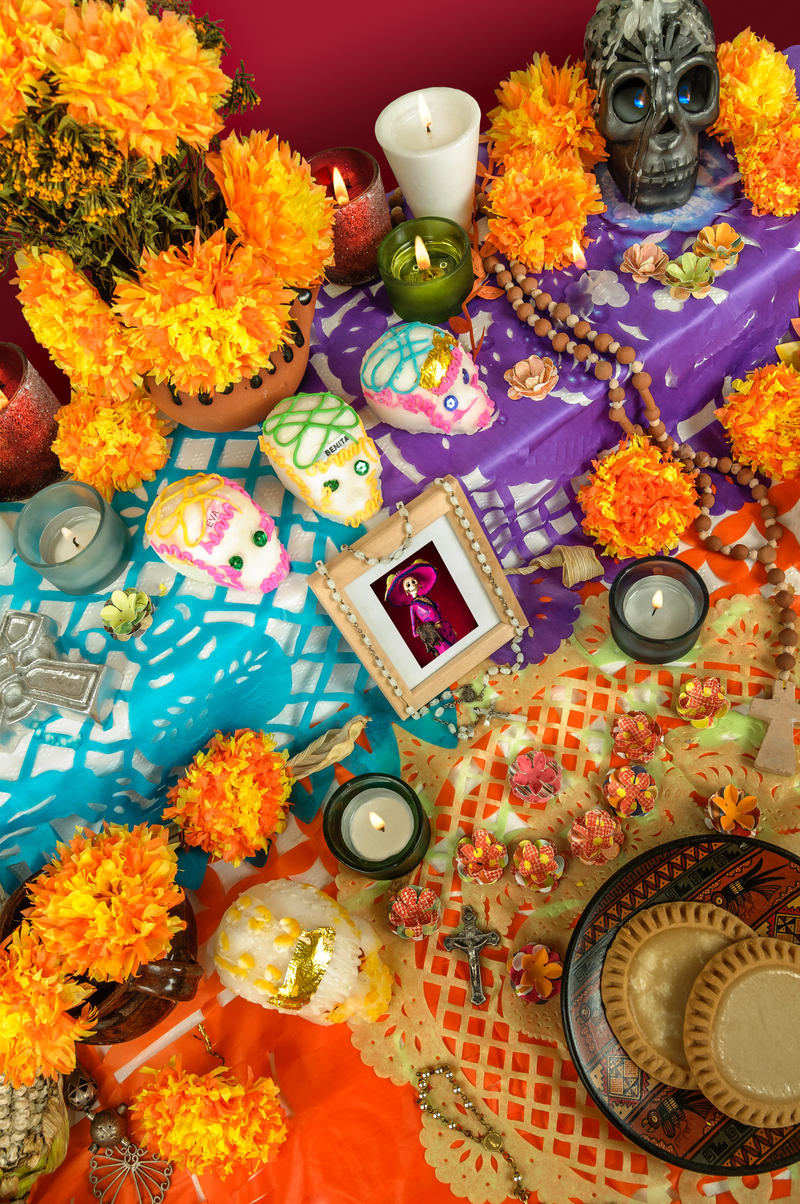Unveil the Mysteries: 8 Surprising Facts About Sunflowers
Posted on 03/07/2025
Unveil the Mysteries: 8 Surprising Facts About Sunflowers
Sunflowers are more than just a cheerful face in the garden. These iconic plants have captured the imagination of artists, gardeners, and scientists for centuries. From their mesmerizing patterns to their impressive usefulness, there's much more to sunflowers than meets the eye. If you're ready to discover the secrets behind their golden petals, keep reading as we unveil the mysteries of sunflowers with eight fascinating and lesser-known facts.
1. Sunflowers Aren't Just Single Flowers
One of the most surprising facts about sunflowers is that what appears to be a single flower is, in reality, a composite of many tiny individual flowers. Each "petal" around the edge is called a ray floret, and the central disc--the brownish center--is composed of hundreds or even thousands of disc florets. Each of these tiny florets is capable of producing a seed if pollinated.
- Ray Florets: The outer yellow "petals" aren't reproductive; they're meant to attract pollinators.
- Disc Florets: Sit in the center and contain both the male (stamen) and female (pistil) reproductive structures, making the sunflower a marvel of dense, efficient design.
This clever botanical strategy helps maximize pollination and seed production. Next time you admire a sunflower's face, remember you're looking at a whole bouquet!

2. Sunflowers Track the Sun--But Only When Young
The name sunflower comes from the plant's unique behavior known as heliotropism. Young sunflower buds and leaves exhibit this fascinating ability to literally follow the sun:
- In the morning, they face east to greet the sunrise.
- Throughout the day, they slowly turn west, following the movement of the sun.
- Overnight, they reset themselves to face east again before dawn.
This sun-tracking behavior maximizes their exposure to sunlight, promoting faster growth. However, here's the twist: mature sunflower heads stop moving and settle facing east. Scientists believe facing east helps warm up the blooms quickly in the morning, attracting more pollinators. Heliotropism is a youthful trait unique to young sunflowers!
3. The Mathematical Magic of Sunflower Seeds
Ever notice the mesmerizing spiral pattern at the center of a sunflower? This natural design isn't just beautiful--it's a stunning example of mathematics in action:
- Fibonacci Sequence: Sunflower seeds arrange themselves in spirals that correspond to the famous Fibonacci sequence (1, 1, 2, 3, 5, 8, 13, and so on).
- Optimal Packing: This arrangement allows for the maximum number of seeds in the smallest space, achieving near-perfect efficiency.
Why does this happen? The mathematical arrangement helps sunflowers optimize sunlight, minimize wasted space, and ensure each seed gets enough nutrients to grow strong. Mathematics and nature intertwine magnificently within every sunflower head!
4. Sunflowers Have Roots in Ancient History
Sunflowers have been cultivated for thousands of years, long before their cheerful faces adorned European gardens. Native Americans were the first to recognize their value, growing sunflowers as far back as 3,000 BC in present-day North America:
- They ground sunflower seeds into flour for baking.
- Sunflower oil served as a nutritious and versatile ingredient.
- Plant parts were even used for dye and medicinal purposes.
European explorers brought sunflower seeds back from the Americas in the 16th century, and the rest is history! Today, sunflower cultivation spans the globe, with millions appreciating their beauty, nutrition, and economic value.
5. Sunflowers: Not Just Pretty Faces, But Eco-Heroes
Sunflowers clean and restore environments in surprising ways:
- Phytoremediation: Sunflowers can absorb harmful toxins, such as lead, arsenic, and uranium, from contaminated soil and water.
- Chernobyl & Fukushima: After the nuclear disasters, scientists planted sunflowers to help extract radioactive elements from the ground--a testament to their power in environmental cleanup.
This invaluable role has earned sunflowers a place among nature's super plants. Plus, they're excellent pollinator attractors, supporting bees and butterflies by providing them ample food sources. Sunflowers are more than garden glamour--they're true eco-warriors!
6. The Many Uses of Sunflowers
When it comes to versatility, few plants can match the sunflower. Every part has a purpose:
- Seeds: Roasted as snacks, pressed for oil, or ground into flour.
- Oil: Used in cooking, skincare, and even as a biodiesel component.
- Petals and Stalks: Petals can be used for yellow dye, while stalks once provided fibers for ropes and building materials.
- Livestock Feed: Sunflower byproducts are high in protein and fiber--perfect for cattle and poultry feeds.
With such diverse uses, sunflowers are an important crop worldwide--not just for their sunny appearance!
7. Symbolism and Significance Through the Ages
Sunflowers aren't just agricultural wonders--they carry deep symbolic meaning around the world:
- Happiness and Positivity: Their radiant appearance makes them symbols of joy and vitality.
- Loyalty and Longevity: In Chinese culture, sunflowers represent lasting fortune and good luck.
- Spiritual Meaning: Many believe sunflowers symbolize faith and unwavering devotion, always turning toward the light.
- Art and Literature: Immortalized in Van Gogh's famous paintings, sunflowers have inspired countless works of art, poetry, and folklore.
Across centuries and cultures, sunflowers embody the energy of the sun itself--bright, enduring, and life-affirming. They're nature's reminders to seek the light, even on cloudy days.
8. Sunflowers Come in More Colors Than You Think
When you envision a sunflower, you probably picture bright yellow petals and a deep brown center. However, sunflowers come in a spectrum of hues!
- Red Sunflowers: Varieties such as 'Moulin Rouge' and 'Chianti' boast deep burgundy or wine-colored petals.
- White Sunflowers: The striking 'Italian White' features creamy, pale petals for a sophisticated look.
- Bi-color Beauties: Some hybrids display multiple shades on a single bloom!
Selective breeding has brought out a full palette of sunflower colors--from orange and rust to lemon and nearly black. Next time you choose sunflower seeds, consider adding a rainbow of options to your landscape!
Sunflower Mysteries Unveiled: Why We Love These Radiant Blooms
Sunflowers continue to captivate us for good reason! Whether it's their clever use of math, their crucial role in ecology, or their inspiring symbolism, there's no denying their appeal.
Quick Recap: 8 Fascinating Facts About Sunflowers
- What looks like one flower is actually hundreds of tiny florets.
- Young sunflowers follow the sun, but adults face east only.
- Sunflower seed patterns demonstrate mathematical perfection.
- Sunflowers were first domesticated in the Americas over 5,000 years ago.
- They help clean up toxins and radioactivity from the environment.
- Sunflowers are grown globally for food, oil, and even livestock feed.
- They've symbolized happiness, loyalty, and hope across cultures and centuries.
- Sunflowers come in many colors--not just yellow!
Whether you plant them in your garden, snack on their seeds, or marvel at their mathematical wonders, sunflowers invite us all to discover, appreciate, and celebrate the mysteries of the natural world.

Frequently Asked Questions About Sunflowers
What do sunflowers symbolize?
Sunflowers commonly symbolize happiness, loyalty, and positivity. In spiritual contexts, they also represent faith and steadfastness.
Can I eat sunflower seeds from any sunflower?
While all sunflower seeds are technically edible, only certain varieties (such as black-oil or striped seeds) produce seeds that are large, tasty, and suitable for snacking. Ornamental sunflowers may produce smaller or less palatable seeds.
How tall can sunflowers grow?
Some giant sunflower varieties--like the aptly named Russian Giant--can reach heights of over 12 feet (3.6 meters), while dwarf varieties stay under 2 feet (0.6 meters).
Why do sunflowers face east when mature?
Research shows that east-facing sunflowers warm up more quickly in the morning sun, attracting more pollinators and ensuring better seed development and reproduction.
How do sunflowers help the environment?
Sunflowers aid in phytoremediation, drawing dangerous substances out of soil and water, and provide valuable food and habitat for pollinators like bees and butterflies.
Conclusion: The Enduring Mystery and Beauty of Sunflowers
Sunflowers stand as awe-inspiring reminders of the wonders of the natural world. From their intricate seed spirals to their role as environmental champions, the history, symbolism, and utility of sunflowers make them a floral favorite for people everywhere.
The next time you encounter a sunflower, take a moment to appreciate its hidden complexity and radiant beauty. And remember--the mystery of sunflowers is just another example of how remarkable our planet truly is.
Let your curiosity and wonder grow--just like the mighty sunflower!







